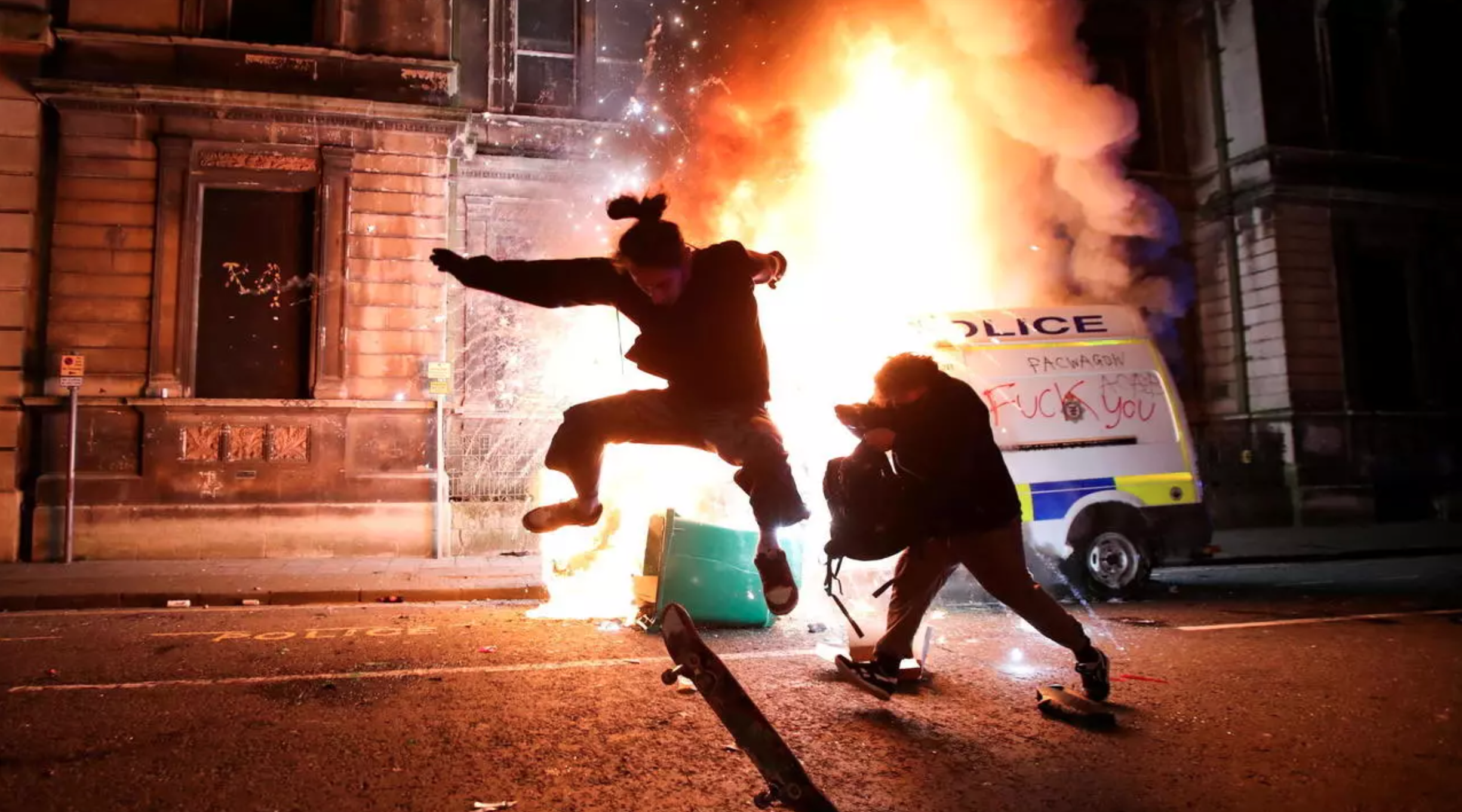Anarchist Federation, March 22, 2021
It’s easy to get a sense of deja-vu when you get home and start reading press reports and twitter accounts from a demonstration. For that reason, whilst I’ll be writing about the events in Bristol this Sunday, I’m also writing about dozens of other demonstrations over the years. I hope you’ll join me on a ramble about how a protest went down, and how press, police, politicians, and their cheerleaders, constructed a narrative around it.
The Build Up
Anger at police and government abuse has been quietly simmering, since the UK BLM demonstrations of summer 2020. Whilst the streets were quieter, the racist and sexist policing has continued. The murder of Sarah Everard, likely by a police officer, led to an out pouring of both grief and louder (but still restrained) anger. Anger at the sexist violence women face on a daily basis, and at a so-called justice system that at best ignores this suffering, and all to often contributes to it. The largest of the vigils that followed the murder took place on Saturday 13th March on Clapham Common.
As if to prove the latter point, police attacked the vigil. They waited until the numbers at the vigil were smaller, until the sky was darker, and until they had built up enough force to overwhelm the crowd still present. The reports and pictures from these attacks spread, and this created a problem for the police. It also created a problem for their bosses in government, as they were hoping to quietly pass a bill aimed at increasing police powers to target protests, travellers, and those who damaged monuments.
The Narrative Begins
First the press responded to the attack on the vigil by reporting it in ‘passive voice’. Reports stated ‘clashes occurred at a vigil’ or ‘clashes between protesters and police’. Words carefully chosen to not indicate who had started the clashes (the police) and who had been on the receiving end of the majority of the violence (those attending the vigil). Whilst not technically a lie, the intention here is to avoid blaming the police, or to imply that the protesters were at fault. Of course had the protesters actually instigated the violence, the early reports would say exactly that ‘crowds attack police’. – and, wait. Protesters? Now that was the second trick of words. People attending a vigil don’t sound very threatening or unlawful, vigil invokes images of flowers, grief stricken speeches, candles, sadness. An accurate description of what had taken place on Clapham Common, but not the most useful if you want to paint the police positively. So many news outlets chose to term everyone present as ‘protesters’. Politicians, such as home secretary Pritti Patel were quick to chime in condemning the ‘violence’ caused by ‘protesters’ at an ‘unlawful gathering’, and the press dutifully repeated these claims, often uncritically.


